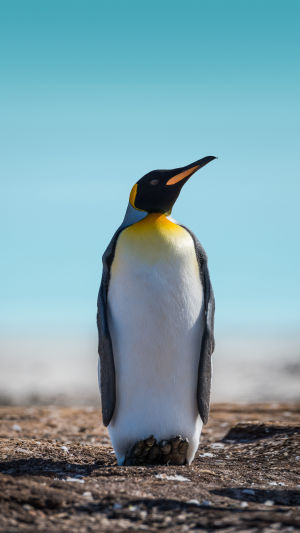Penguins are a species found mainly in the southern hemisphere, and it refers to all animals in the order Ornithischia, the penguin family. In terms of specific classification, there are six genera, comprising 18 species. Some genera include more than one species, while others have only one species.
1. King penguins: This species is relatively large and can be close to 1 metre tall and weigh around 15 kg. They have orange sections on their necks and extend downwards and backwards over a larger area.
2. Emperor penguin: This species is the largest of the penguins in terms of size, they can weigh even more than 50 kg and can reach a height of 1.2 metres.
3. Adelie penguin: This species is relatively small, standing at just over 70cm tall. Compared to other penguins, this species is more aggressive. They like to move in groups, often with dozens or even hundreds of penguins gathered together.
4. Hooded penguins: These penguins are also easy to recognise because they have a very distinctive black stripe around their necks, like a hatband, which is how they got their name.
5. Little Blue Penguin: This species has blue plumage and is very small, hence its name. At just over 40cm tall, they are the smallest of the penguin species.
Penguin habits.
1. Feeding
Penguins feed on marine zooplankton. mainly Antarctic krill, and sometimes on brachiopods, squid and small fish. Penguins have a good appetite, with each penguin eating an average of 0.75 kg of food per day, mainly Antarctic krill. Penguins therefore play an important role in the Southern Ocean food chain as predators. Penguins consume approximately 33.17 million tonnes of krill in the Antarctic, representing 90% of the total consumption of Antarctic birds and half of the krill consumed by whales.
2. Temperament
Penguins have a simple, generous and very amusing temperament. Despite their imposing, arrogant and even overbearing appearance, penguins do not run away from people when they approach them. Sometimes as if they are unconcerned, sometimes as if they are shy and overwhelmed, and sometimes as if they are looking around. It's funny how naive and silly they are, perhaps because they rarely see people and are curious.
Penguins can swim nimbly and easily in the water, but this ability probably offsets their ability to fly.
3. Swimming
The penguin is the quintessential seabird, and although it is flightless, it is a superb swimmer among birds. While many waterfowl swim by paddling through the water with their webbed feet, the penguin's feet are also webbed but are used only as a rudder to control their direction, relying on their oar-like wings to fly through the water.
Penguins are physically strong, hard-working and aggressive, and these habits have enabled them to survive the harsh natural conditions of the Antarctic. Penguins also have a natural enemy in the form of the gull. Gulls like to hover over penguin colonies, looking for opportunities to remove eggs from their nests or kill their young. However, the gull's behaviour is always met with an attack by the penguins, causing the gull to flee.





